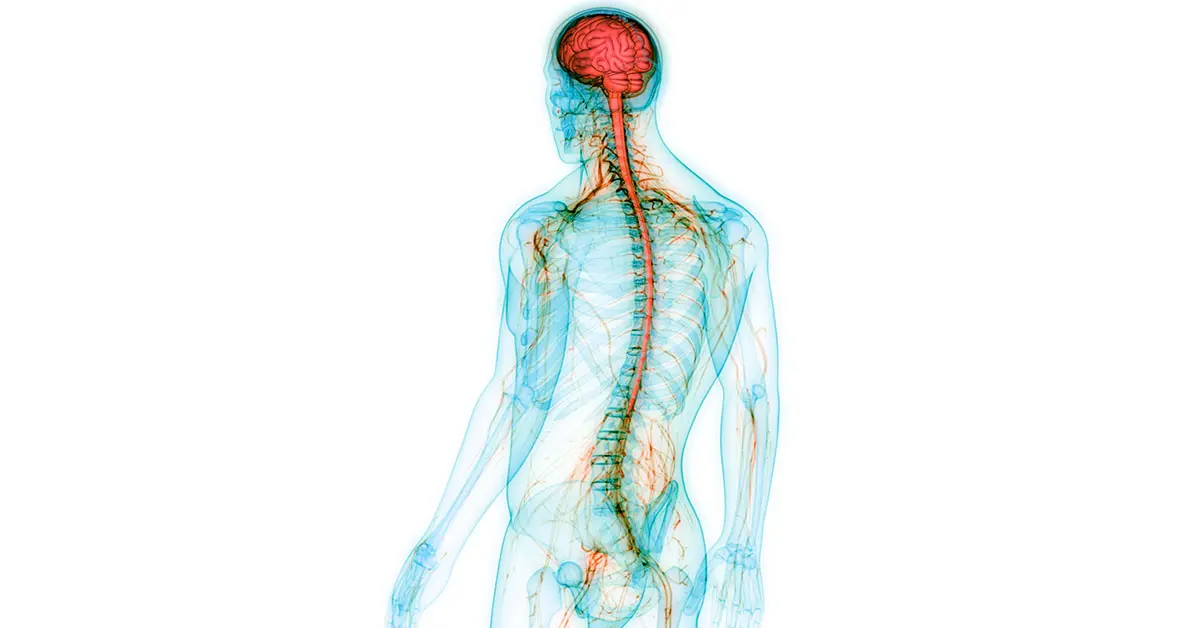Visión general del sistema nervioso
El sistema nervioso es una red intrincada y altamente compleja que gobierna todas las funciones corporales. Es responsable de recibir, integrar y transmitir información tanto del entorno externo como del propio cuerpo. Compuesto por centros nerviosos y vías neuronales, puede considerarse como una cadena de células nerviosas a través de las cuales viajan las señales. Estas células nerviosas se clasifican en elementos sensoriales (receptores) y elementos motores (efectores).
Funciones principales del sistema nervioso
El sistema nervioso funciona como una unidad especializada que controla, regula y coordina todas las actividades corporales realizando tres funciones fundamentales:
- Función sensorial: detectar y recibir estímulos del entorno y del cuerpo, convertir estos estímulos en señales neuronales y transmitirlas a los centros de integración.
- Función integradora: procesar e interpretar la información sensorial entrante para decidir la respuesta adecuada.
- Función motora: generar y enviar una respuesta apropiada a los órganos efectores para ejecutar acciones.
Organización general del sistema nervioso
Basado en consideraciones anatómicas y fisiológicas, el sistema nervioso puede subdividirse en:
Sistema Nervioso Central (SNC): la parte integradora
También llamado el neuroeje, consiste en la médula espinal, alojada dentro del canal vertebral, y el cerebro, ubicado dentro de la cavidad craneal. El cerebro incluye el tronco encefálico, el cerebelo y el cerebro propiamente dicho.
El SNC funciona como el centro principal de regulación e integración del sistema nervioso. Maneja las interacciones con el entorno externo, analiza e interpreta la información sensorial recibida, la clasifica y compara, y formula una respuesta motora adecuada.
Sistema Nervioso Periférico (SNP): los componentes sensoriales y motores
El Sistema Nervioso Periférico (SNP) comprende todas las estructuras neuronales ubicadas fuera del cerebro y la médula espinal. Sirve como la red de comunicación crucial que conecta el sistema nervioso central (SNC) con las extremidades, órganos y tejidos del cuerpo. Funcionando como la autopista de información del cuerpo, el SNP permite la transmisión de datos sensoriales al SNC y envía las órdenes motoras desde el SNC hacia la periferia.
Estructuralmente, el SNP consta de:
- Nervios craneales: Doce pares de nervios que emergen directamente del tronco encefálico e inervan principalmente estructuras de la cabeza y el cuello, aunque algunos (como el nervio vago) se extienden hacia órganos torácicos y abdominales.
- Nervios espinales: Treinta y un pares de nervios que surgen de la médula espinal, cada uno asociado a un segmento corporal específico (dermatoma y miotoma), responsables tanto de la inervación sensorial como motora del tronco y las extremidades.
- Ganglios: Colecciones de cuerpos celulares neuronales ubicados fuera del SNC que actúan como estaciones de relevo para las señales nerviosas.
Subdivisiones funcionales del SNP
El SNP se divide funcionalmente en dos componentes principales según el tipo de control y las estructuras objetivo:
1️⃣ Sistema Nervioso Somático (SNS)
- Control voluntario: El SNS gobierna los movimientos conscientes e intencionales.
- Objetivo: Inerva los músculos esqueléticos estriados, permitiendo un control preciso de los movimientos corporales, la postura y los reflejos.
- Vías: Las neuronas motoras somáticas transmiten señales desde el SNC hacia los músculos esqueléticos, mientras que las neuronas sensoriales somáticas llevan información desde la piel, músculos, articulaciones y órganos sensoriales especiales (como ojos y oídos) de regreso al SNC.
2️⃣ Sistema Nervioso Autónomo (SNA)
- Control involuntario: El SNA regula actividades automáticas o subconscientes esenciales para la supervivencia y la homeostasis.
- Objetivo: Controla el músculo liso de los órganos internos, el músculo cardíaco, los vasos sanguíneos y las glándulas.
-
Subdivisiones:
- División simpática (lucha o huida): Prepara el cuerpo para situaciones de estrés o emergencia aumentando la frecuencia cardíaca, dilatando las vías respiratorias y movilizando las reservas de energía.
- División parasimpática (descanso y digestión): Promueve la relajación, la digestión y la conservación de energía.
- Sistema nervioso entérico (a veces considerado parte del SNA): Red especializada incrustada en la pared del tracto gastrointestinal que regula funciones digestivas de forma independiente, aunque interactúa con las divisiones simpática y parasimpática.
📚 Recursos Científicos Esenciales para Profundizar en Neurofisiología
-
Visión general del sistema nervioso: estructura y función
Explora una revisión completa sobre la anatomía y fisiología del sistema nervioso, que abarca las partes central y periférica.
Leer artículo completo aquí -
Funciones sensorial, integradora y motora del sistema nervioso
Conoce las tres funciones fundamentales del sistema nervioso y cómo las vías neuronales coordinan estos procesos.
Accede al estudio aquí -
Sistema nervioso central: cerebro y médula espinal
Entiende la neuroanatomía y funciones del cerebro, tronco encefálico, cerebelo y médula espinal como centro integrador.
Explora esta revisión detallada -
Sistema nervioso periférico: anatomía y divisiones funcionales
Aprende sobre los nervios craneales y espinales, ganglios y su papel crucial como vías de comunicación entre el SNC y el cuerpo.
Lee más aquí -
Sistema nervioso somático: control voluntario de los músculos esqueléticos
Descubre cómo el sistema somático regula el movimiento consciente y procesa la información sensorial de la piel y los sentidos especiales.
Consulta esta revisión completa -
Sistema nervioso autónomo: regulación de funciones involuntarias
Explora las divisiones simpática y parasimpática que mantienen la homeostasis y controlan actividades vitales involuntarias.
Artículo detallado disponible aquí -
Sistema nervioso entérico: el “segundo cerebro” del intestino
Investiga esta red neural especializada dentro del tracto gastrointestinal que regula la digestión de forma independiente pero interactúa con el sistema autónomo.
Más información en esta revisión
